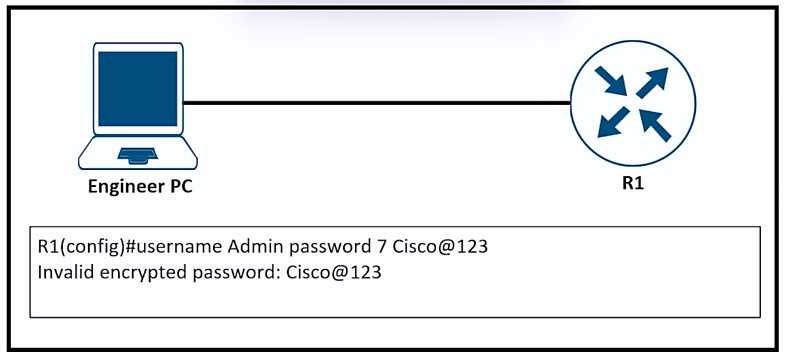
Refer to the exhibit. An engineer is trying to add an encrypted user password that should not be visible in the router configuration. Which two configuration commands resolve the issue?
(Choose two.)

Refer to the exhibit. An engineer is trying to add an encrypted user password that should not be visible in the router configuration. Which two configuration commands resolve the issue?
(Choose two.)
To ensure the password is encrypted and not visible in the router configuration, two commands are relevant. The 'username Admin secret Cisco@123' command specifies the secret keyword, which uses an MD5 hashing algorithm to encrypt the password. This ensures that the password is not stored in plain text in the configuration. Additionally, the 'service password-encryption' command globally enables the encryption of all plain text passwords, ensuring any password entered without the secret keyword is also encrypted. These commands together resolve the issue of the password being visible in the router configuration.
A|B password will encrypt
I believe A & B would be a suitable answer. using "secret" HASHes the password, not encrypting it. the engineer tried to encrypt the password not HASH it so A would be good.
In the data security field, encryption and hashing are commonly compared, but why is this the case. Encryption is a two-way function where data is passed in as plaintext and comes out as ciphertext, which is unreadable. Since encryption is two-way, the data can be decrypted so it is readable again. Hashing, on the other hand, is one-way, meaning the plaintext is scrambled into a unique digest, through the use of a salt, that cannot be decrypted. Technically, hashing can be reversed, but the computational power needed to decrypt it makes decryption infeasible.
A&B. The question states ENCRYPTION not HASHING.
should be A and B
A & B are correct